JANUARY 17
Sewing Traditional Dirndls
JANUARY 17
Traditionelle Dirndl nähen
Sewing traditional dirndls, what do I need to know?
I would like to sew myself a traditional dirndl and this immediately raises a few important questions and topics. Because the project, sewing dirndls, is a very sophisticated project that should be fun from start to finish. Of course, we want and can be proud of our performance and what we have achieved in the end.And sewing a dirndl begins with the following questions and topics:
What occasion should the new dirndl be for?
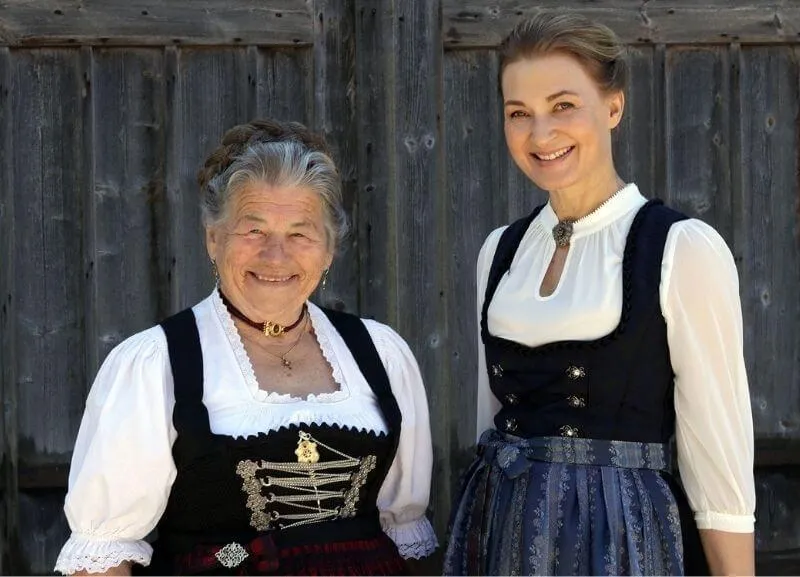
Should the new dirndl be for a wedding or a family celebration? Or should it be for a spring, autumn or other folk festival?
Or will it perhaps be an everyday garment?
This is a very important question in advance because it strongly influences the choice of fabric for our dirndl.
Summer or winter dirndl? The right choice of fabric
Because this important question also influences our choice of materials.
No matter what time of year, there are always occasions to wear a traditional dirndl.
And of course the summer fabrics are different from the winter fabrics.
Summer fabrics tend to be light, bright and colorful and dirndls are mainly made of cotton.
With winter fabrics , on the other hand, the colors are usually more muted, the fabrics are firmer and the dirndl skirts are made of wool.
Because the right choice of fabric is what makes our dirndl perfect.
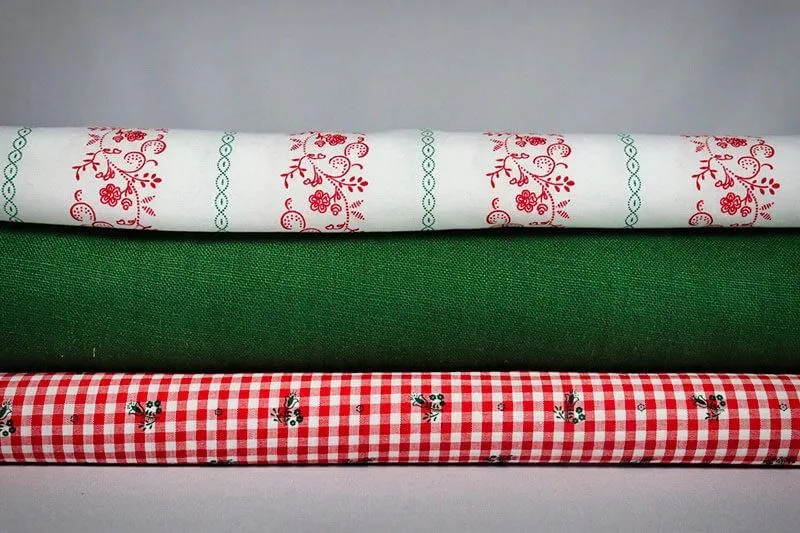
Wash dirndl or blouse dirndl? The model or cut selection
Before you start sewing your dirndl, you should first decide on a model.
Should it be a dirndl with sleeves, i.e. a washable dirndl, with short or long sleeves or perhaps a blouse dirndl?
With the blouse dirndl, the question of the neckline shape arises again.
Do you want a square, round, high neck or V-neck?
Should your dirndl skirt be hand-stitched or pleated?
All of these issues influence your choice of fabric and cut.
Did you see that?
Our NEW "Dirndl Sewing - Beginner's Course". Avoid the most common mistakes when sewing your dirndl or apron, even if you're not a sewing professional.
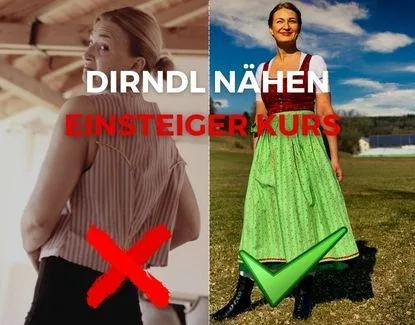
What equipment and tools do you actually need to sew a dirndl?
To sew a beautiful traditional dirndl, you need the usual sewing utensils, such as:
a working sewing machine
an overlock would be recommended (alternatively zigzag stitch on the sewing machine)
a steam iron and ironing board
a sleeve ironing board and an ironing pad
Fabric scissors, paper scissors, pinching scissors
Waistband with hook, normal measuring tape, possibly hand measure
Tailor's chalk and a skirt rounder
Tracing wheel and chalk paper, pencil, possibly paper, sticky tape (for changing and adjusting the basic cut and making notes)
a large piece of cardboard to cycle through
Pins, sewing needles, thimble
matching colour sewing thread, thread
Hook and eyelet
of course our fabric, iron-on interlining, checks, borders and ruffles for decoration
and a matching dirndl pattern
Taking the right measure
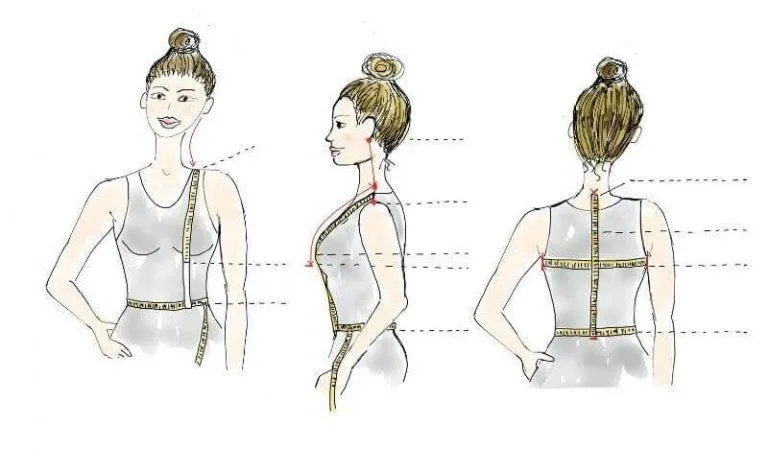
The right measurements are the be-all and end-all when sewing a dirndl.
Get a friend to help you , so you don't have to contort yourself in front of the mirror, which could distort your measurements.
When taking your measurements, put on the bra that you will later wear with this dirndl. This is important so that the darts will sit in the right place later on. Because every bra shapes the breasts differently.
It doesn't necessarily have to be a dirndl bra, but the bra should definitely fit well.
The right tape measure also plays a role.
When taking your measurements, be sure to put on a waistband first and hook it so that it sits tightly around your waist but is still comfortable to breathe.
You can then measure all the other dimensions and, very importantly, write them down and don't lie.
You can then select the appropriate dirndl pattern. There are several providers for this.
For example, with the Rosmarie Henke method, the basic cut is selected according to your bust size and may be adjusted or modified to suit your body measurements.

"I spent a long time trying out free YouTube videos without a plan and was always frustrated. With the 'Dirndl Sewing - Beginner's Course' by Rosmarie Henke you get a very good overview of what is important when sewing a dirndl."
-Sandra Franke

The cut for the traditional Dirndl
Before you can start sewing your dirndl, you have to cut out the pieces for your dirndl.
You also need to consider the following things:
If you use a cotton fabric for your dirndl, please iron it well beforehand so that it does not shrink later.
When cutting, you must also pay attention to the grain and the patterns (flowers, stripes, checks) and do not forget to mark the seam allowances with tailor's chalk.
With the Rosmarie Henke method, for example, you first only cut out your lining top and your skirt.
Now it’s time to sew the dirndl
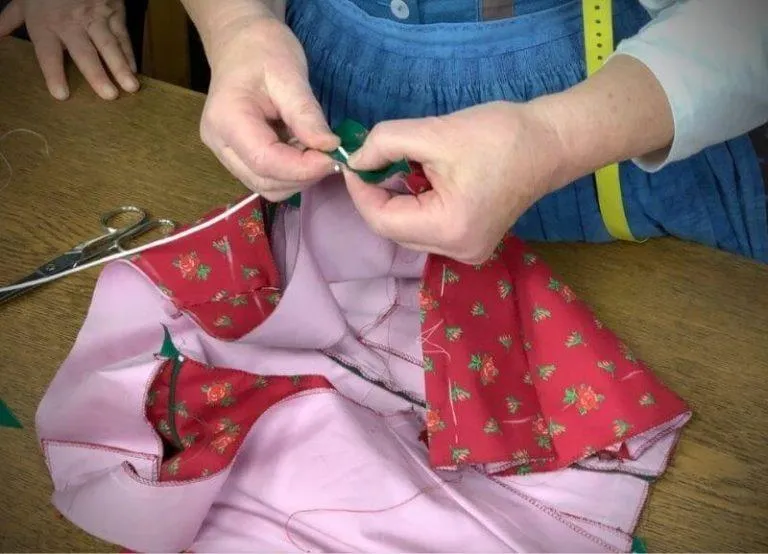
For example, with the Rosmarie Henke method , when sewing a traditional dirndl, you always start
with the lining top.
You stitch it together with a large stitch, do a first fitting and mark all the changes.
Only then, when the lining top fits correctly, is the top cut according to this lining top.
In the Rosmarie Henke method, the piping for the Viennese seam is made from bias strips and a piping cord, usually from leftover fabric from the skirt or another suitable fabric, and sewn on by hand.
This means there is no annoying slipping of the piping.
Of course, there are many other manufacturing techniques.
Usually the dirndl bodice (the top) is sewn with the outer fabric first, including the finished piping, then the first fitting follows and the lining top is made afterwards.
Using ready-made piping requires some practice, as you often cannot get close enough to the edge with the sewing machine.
Next step, sewing the dirndl skirt
First, you need to decide whether you want a hand-pleated skirt or a pleated skirt.
Both are beautiful!
The traditional way would be to string the skirt by hand.
You can learn this, for example, with the Rosmarie Henke method.
For this you need a sewing square or also called sewing fabric and a sewing thread that is stronger than normal sewing silk.
And you also need a bit of patience, but it's definitely worth it.
And a hand-stitched dirndl skirt flows beautifully over the hips and flatters the female figure.
But there is another method.
Of course, you can also fold the dirndl skirt, with larger folds often being placed from the middle back.
Begin the pleating with a double (or single) box pleat from the center back.
For the skirt width, a skirt width of 3 meters should be estimated from the outset .

"The 'Dirndl Sewing - Beginner's Course' gives a very good overview if you
want to sew a dirndl yourself. I wish I had discovered this course by Rosmarie Henke earlier, it would have saved me a lot of time and disappointment."
- Andrea Münzer

Sew the dirndl top and dirndl skirt together
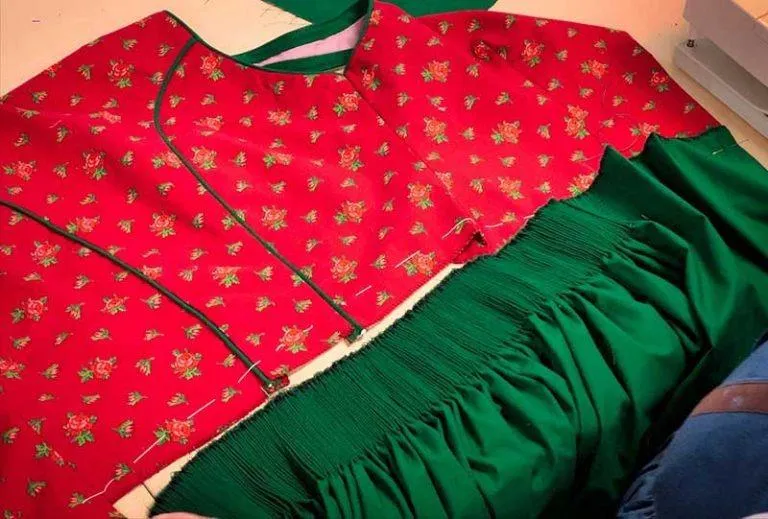
If your dirndl top now fits well and your skirt is also fully arranged or folded, the skirt pocket is sewn in, you can now pin both parts, top and skirt, together, possibly tack them and then stitch them together.
The buttonholes
In the next step, you can mark your buttonholes evenly on the right front of your dirndl top with tailor's chalk.
You can determine the correct buttonhole size based on your buttons.
Now comes another big decision when sewing a traditional dirndl:
Would you prefer hand-sewn or machine-sewn buttonholes?
Both look good.
Once you have sewn your buttonholes, you can next sew on your buttons.
Your dirndl is now almost finished.
Determine the correct skirt length for your dirndl
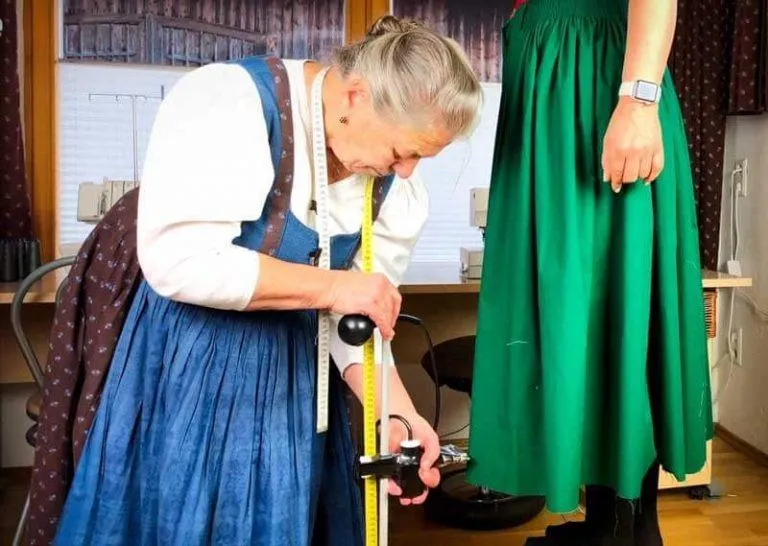
If you want your dirndl to look elegant, we recommend that you don't make it too short!
There is a rule for the correct dirndl length when sewing a traditional dirndl, it is said:
Quote Rosmarie Henke: “Maßkrug high off the ground”
This is a really nice length and looks very tasteful.
So that you can mark the same skirt length all around, a skirt marker would be perfect for this.
The best way to sew the skirt hem is by hand using a hem stitch.
Finally, pretty decorations

Your dirndl is almost finished and you can now decorate it to make it even more beautiful .It looks beautiful
when attached to the neckline or hem.
How about a handmade ruffle, such as a heart ruffle?
Braids and trimmings are also ideal for decoration.
Did you see that?
Our NEW "Dirndl Sewing - Beginner's Course". Avoid the most common mistakes when sewing your dirndl or apron, even if you're not a sewing professional.

Now it's time to sew dirndl aprons
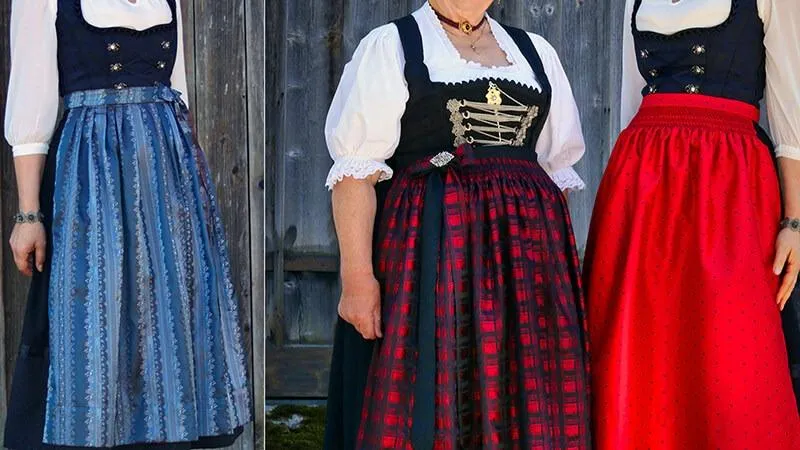
We have created a separate blog post for this , which you can find here.
Link to the blog post How to tie a bow on a dirndl apron >>
Iron everything again well and carefully (with an ironing cloth) and your dirndl is now ready to be worn!
Sewing traditional dirndls is great fun!
Copyright 2024 Rosmarie Henke from arandoo, Inc. - Privacy policy | Terms of Use
